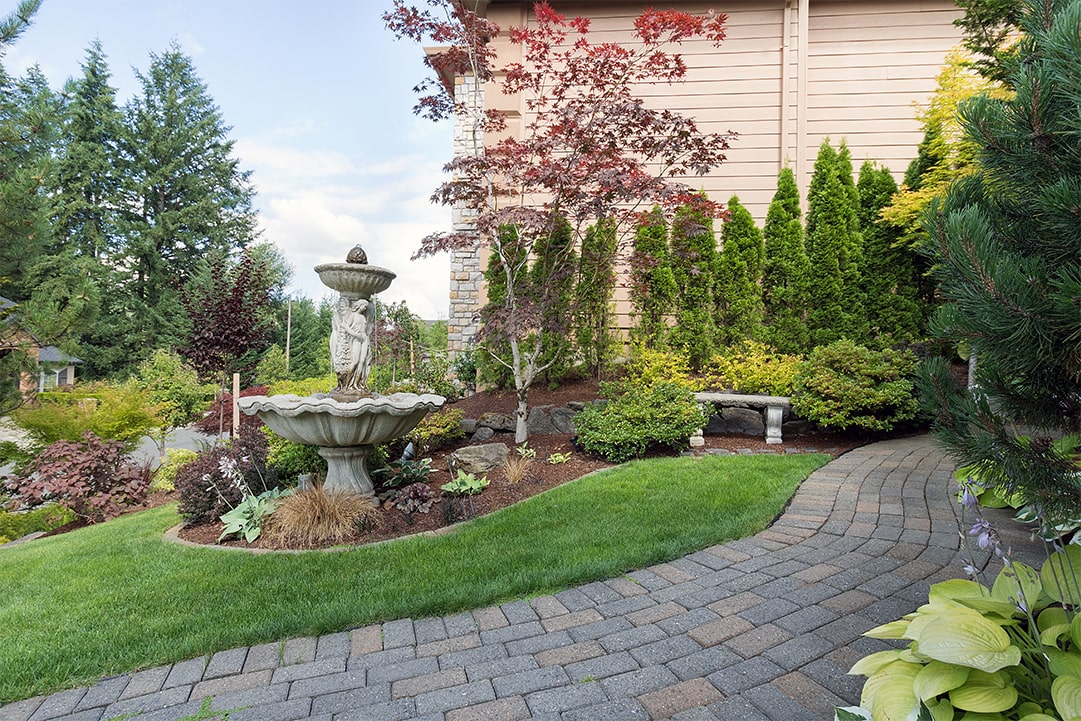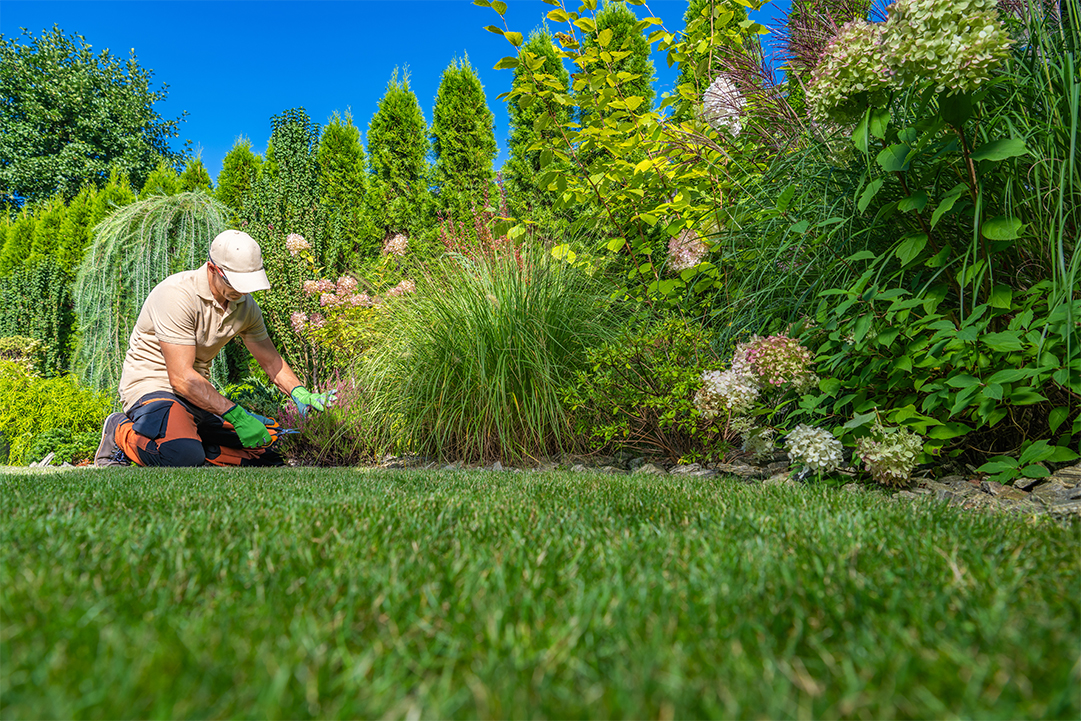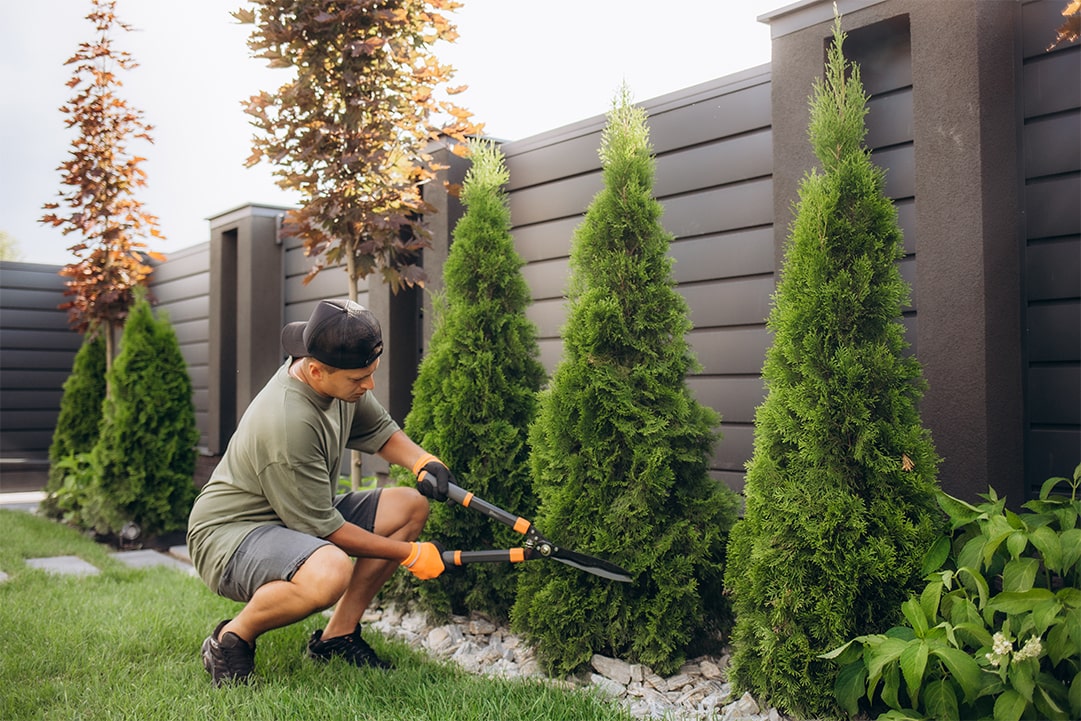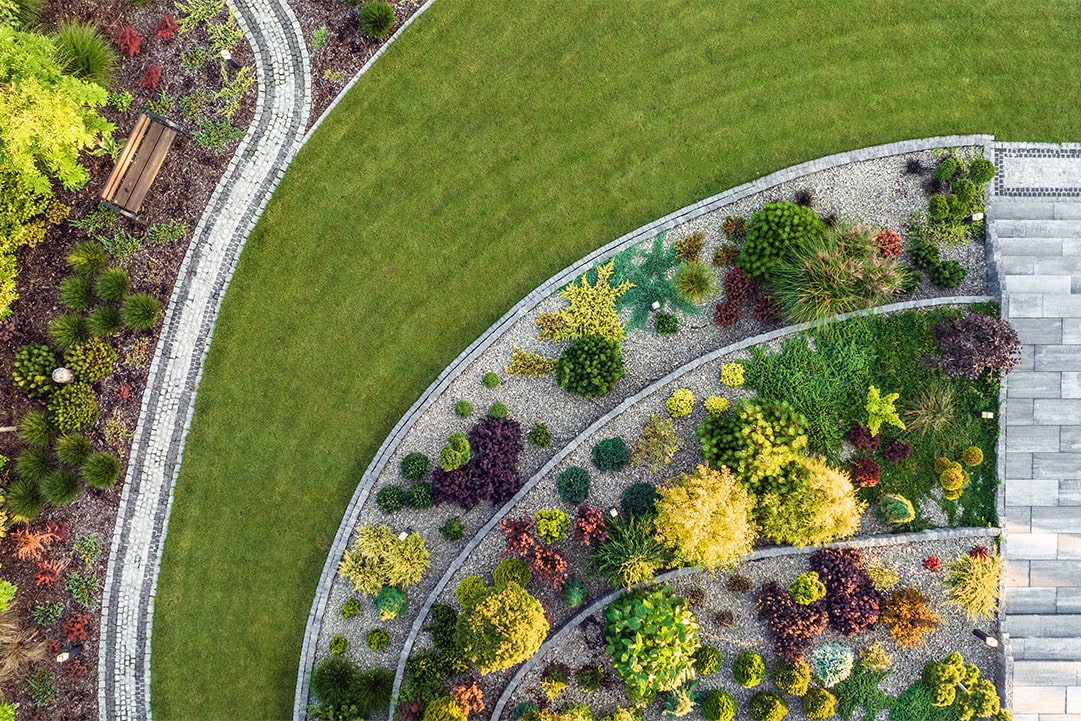Hardscaping, an often underappreciated but crucial element of landscape design, stands at the intersection of artistry and practicality in outdoor spaces. While plants and greenery are the lifeblood of a garden, it’s the hardscape elements that provide structure and lasting appeal. This intricate dance between form and function in hardscaping not only shapes the physical landscape but also influences how we interact with our outdoor environments.
In this article, you will learn:
- The critical balance between aesthetic appeal and practical utility in hardscaping.
- How to select the right materials and designs for a cohesive landscape.
- Ways to enhance both the beauty and functionality of your outdoor space through hardscaping.
Navigating the world of hardscaping can be as much about expressing personal style as it is about addressing practical needs. Let’s delve into how you can transform your outdoor area into a harmonious blend of beauty and utility.
Key Takeaways
- Understanding the delicate balance between form and function is essential in hardscaping, ensuring both aesthetic appeal and practical usability.
- Selecting the right hardscape materials and designs is crucial for creating a landscape that is both visually pleasing and harmoniously integrated.
- Effective hardscaping enhances outdoor living spaces, combining style with sustainability and functionality for lasting enjoyment and utility.
Exploring Hardscaping Materials
The choice of materials in hardscaping is not just a question of aesthetics; it’s a decision that impacts the durability, maintenance, and overall harmony of your landscape. Let’s dive into some popular hardscaping materials and their unique characteristics.
- Metal: Known for its durability and sleek appearance, metal is a top choice for modern designs. Its weather-resistant qualities make it ideal for structures like gates and fences. However, it’s essential to select the right type of metal to prevent rust and ensure longevity.
- Wood: Offering a natural, warm aesthetic, wood is a versatile choice for decks, pergolas, and benches. While it requires regular maintenance to prevent decay and weathering, sustainably sourced wood can be an eco-friendly option that adds a touch of nature to your outdoor space.
- Stone: The timeless appeal of stone, with its natural color variations and durability, makes it a favorite for pathways, walls, and accents. From flagstone to cobblestone, the range of stone types offers endless design possibilities. Its natural look integrates seamlessly into most landscapes.
- Concrete: Its strength and customizability make concrete a practical choice for many hardscaping elements. From stamped concrete patios to sleek, colored walkways, it offers a range of finishes and is known for its low maintenance and longevity.
- Porcelain: A less common but increasingly popular option, porcelain tiles offer high durability and low water absorption, making them ideal for wet areas. Their wide range of designs, including those that mimic natural stone or wood, provides aesthetic versatility.
Each material brings its own set of advantages and considerations. Whether you’re seeking the rustic charm of wood, the elegance of stone, or the modern appeal of metal and concrete, the right choice depends on your design vision, maintenance preferences, and environmental conditions of your area. Integrating these materials thoughtfully can result in a harmonious and functional outdoor space that reflects your personal style and stands the test of time.
Hardscape Design Ideas: Traditional vs Modern
The world of hardscaping offers a spectrum of styles, from time-honored traditional to cutting-edge modern designs, each bringing its unique charm and functionality. Understanding these styles can help in creating a landscape that reflects personal taste while catering to functional needs.
Traditional Hardscaping: Traditional designs often draw from classic elements that have stood the test of time. Materials like brick, natural stone, and wood are predominant, evoking a sense of history and natural beauty. Traditional hardscaping focuses on creating a warm, inviting ambiance. For example, a cobblestone walkway leading to a wood pergola can create a cozy, rustic feel. These elements often blend seamlessly with lush greenery, creating a timeless outdoor setting.
Modern Hardscaping: In contrast, modern hardscape designs emphasize clean lines, minimalist aesthetics, and innovative materials. Concrete, in its various forms, and metal are frequently used for their versatility and sleek appearance. Modern designs often focus on geometric patterns and streamlined structures. For instance, a contemporary patio with stamped concrete flooring and sleek metal furniture offers a chic, urban appeal. These designs are ideal for those seeking a more refined, less ornate outdoor space.
Blending traditional and modern elements can result in a uniquely personalized space. Imagine combining the natural warmth of wooden decking with the clean lines of a metal railing, or integrating a modern concrete fire pit into a traditional stone patio. This approach allows for creative expression and can cater to a wide range of aesthetic preferences.
The key to successful hardscape design lies in finding the right balance. Whether leaning towards a traditional, modern, or blended style, the goal is to create a space that is both visually appealing and functionally sound, resonating with the homeowner’s lifestyle and the home’s architectural character.
Front Yard and Backyard Hardscape Ideas
The front yard and backyard of a home offer distinct opportunities for hardscaping, each serving different purposes and catering to various aspects of outdoor living. Let’s explore some hardscape ideas for these areas.
Front Yard Hardscape Ideas: The front yard is the first impression of a home, and hardscaping plays a pivotal role in enhancing its curb appeal.
- Water Features: Adding a water feature like a fountain or a small pond creates a focal point and adds a serene ambiance to the front yard.
- Sculptures and Art Pieces: Strategically placed sculptures or art pieces can add an artistic touch and elevate the yard’s aesthetic appeal.
- Pathways and Walkways: Well-designed pathways not only guide visitors to your front door but also enhance the overall look of the front yard. Materials like natural stone, pavers, or stamped concrete can be used to create attractive, durable paths.
Backyard Hardscape Ideas: The backyard is typically a private space used for relaxation and entertainment, and hardscaping can transform it into a functional and inviting area.
- Seating Areas: Incorporating seating areas, either through built-in benches or strategically placed patio furniture, provides comfortable spaces for relaxation and socializing.
- Fire Pits: A fire pit serves as a cozy gathering spot and extends the usability of the backyard into cooler evenings.
- Outdoor Kitchens and Pergolas: For those who enjoy outdoor cooking and dining, an outdoor kitchen, complemented by a pergola for shade, can be a fantastic addition.
- Garden Structures: Adding structures like gazebos or trellises can create visual interest and support climbing plants, integrating hardscaping with the natural landscape.
Each of these ideas can be tailored to fit the specific style and needs of the homeowner, ensuring that the hardscaping not only enhances the beauty of the property but also adds practical value. Whether it’s creating a welcoming front yard or a backyard oasis, thoughtful hardscaping can significantly improve the outdoor experience.
Additional Considerations and Tips
When embarking on a hardscaping project, there are several additional factors to consider to ensure the longevity, safety, and aesthetic appeal of your outdoor spaces. Here are some key tips and considerations:
- Sloped Surfaces: Hardscaping on sloped surfaces requires careful planning. Terracing or retaining walls can be effective solutions to create flat, usable areas and prevent soil erosion. Choosing the right materials and ensuring proper installation are crucial for stability and drainage.
- Proper Drainage: Effective drainage is vital in hardscaping to prevent water accumulation and potential damage to structures. Incorporate slopes, drains, or permeable materials in your design to ensure water is directed away from buildings and hardscape elements.
- Working with Existing Concrete: If your project involves updating or integrating with existing concrete structures, consider options like resurfacing, staining, or stamping to revitalize them. These methods can refresh the look without the need for complete replacement.
- Choosing the Right Time: Timing can significantly impact the success of your hardscaping project. Generally, it’s best to plan hardscaping during dry periods to avoid complications with wet soil and to ensure a stable working environment.
- Enhancing Home Security: Thoughtful hardscaping can also contribute to home security. Features like well-placed lighting, fences, and strategic landscape design can deter intruders while enhancing the overall aesthetic.
- Consulting Professionals: For complex projects or when working with challenging landscapes, consulting with professional landscapers or hardscape designers can provide valuable insights and ensure the project’s success.
By keeping these considerations in mind, you can tackle hardscaping projects more effectively, creating outdoor spaces that are not only beautiful but also functional, safe, and enduring.
Hardscaping is an art that elegantly combines form and function, transforming outdoor spaces into areas of beauty and utility. From the welcoming paths of the front yard to the cozy nooks of the backyard, each element plays a pivotal role in creating a harmonious landscape. As you embark on your hardscaping journey, remember the importance of choosing the right materials, integrating both traditional and modern designs, and considering practical aspects like drainage and seasonal timing. By thoughtfully balancing these elements, you can craft outdoor spaces that not only enhance curb appeal but also provide lasting enjoyment and functionality.




